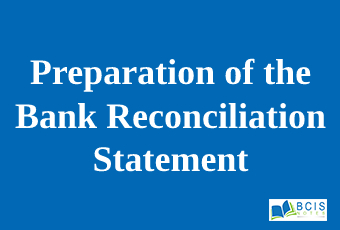
Preparation of the Bank Reconciliation Statement
A bank reconciliation statement is a document that compares the cash balance on a company’s balance sheet to the corresponding amount on its bank statement. Reconciling the two accounts helps identify whether accounting changes are needed. Bank reconciliations are completed at regular intervals to ensure that the company’s cash records are correct. They also help detect fraud and any cash manipulations.
Bank Reconciliation Procedure
- On the bank statement, compare the company’s list of issued checks and deposits to the checks shown on the statement to identify uncleared checks and deposits in transit.
- Using the cash balance shown on the bank statement, add back any deposits in transit.
- Deduct any outstanding checks.
- This will provide the adjusted bank cash balance.
- Next, use the company’s ending cash balance, add any interest earned, and notes the receivable amount.
- Deduct any bank service fees, penalties, and NSF checks. This will arrive at the adjusted company cash balance.
- After reconciliation, the adjusted bank balance should match with the company’s ending adjusted cash balance.
Bank Reconciliation Statement
After recording the journal entries for the company’s book adjustments, a bank reconciliation statement should be produced to reflect all the changes to cash balances for each month. This statement is used by auditors to perform the company’s year-end auditing. A bank reconciliation compares the bank statement and our company’s records and reconciles or balances to two account balances. How does it do this? There are several items of information we can get by comparing the bank statement to our records anything that doesn’t match or doesn’t exist in both places is called a reconciling item. A reconciling item will be added or subtracted to the bank or book side of the reconciliation.
Example
XYZ Company is closing its books and must prepare a bank reconciliation for the following items:
- The bank statement contains an ending balance of $300,000 on February 28, 2018, whereas the company’s ledger shows an ending balance of $260,900
- The bank statement contains a $100 service charge for operating the account
- Bank statement contains interest income of $20
- XYZ issued checks of $50,000 that have not yet been cleared by the bank
- XYZ deposited $20,000 but this did not appear on the bank statement
- A check for the amount of $470 issued to the official supplier was misreported in the cash payments journal as $370.
- A note receivable of $9,800 was collected by the bank.
- A check of $520 deposited by the company has been charged back as NSF.
You may also like Components of Cash and Cash equivalents

Leave a Reply